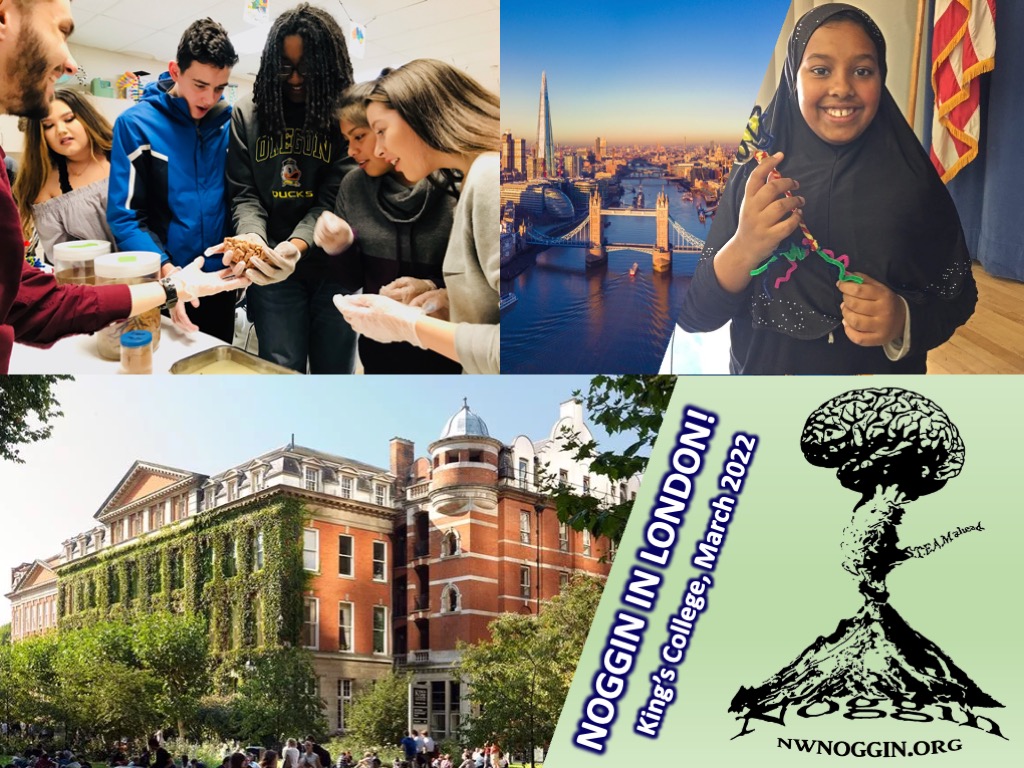So while last week’s freezing temperatures drove us inside a large, well-ventilated gym for K-5 students at Washington Elementary…
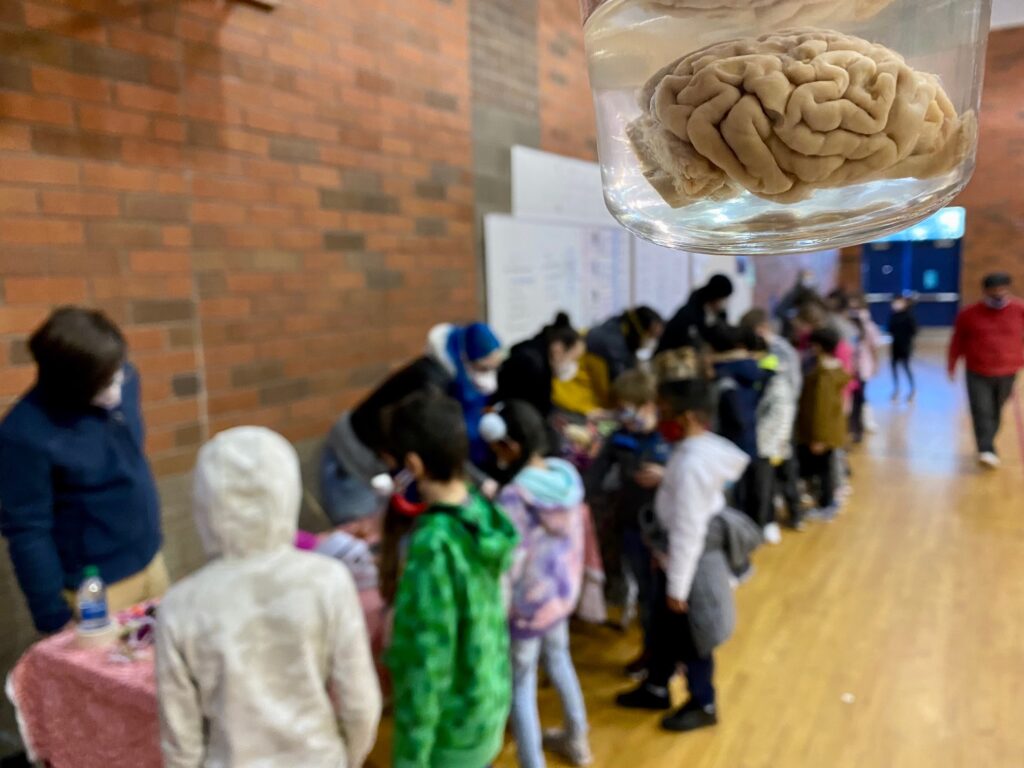
LEARN MORE: Hands on Brains!
THIS week a literal atmospheric river of Northwest rain led us to plan to station our volunteers, noggins and art under a generous outdoor tent at Fort Vancouver!
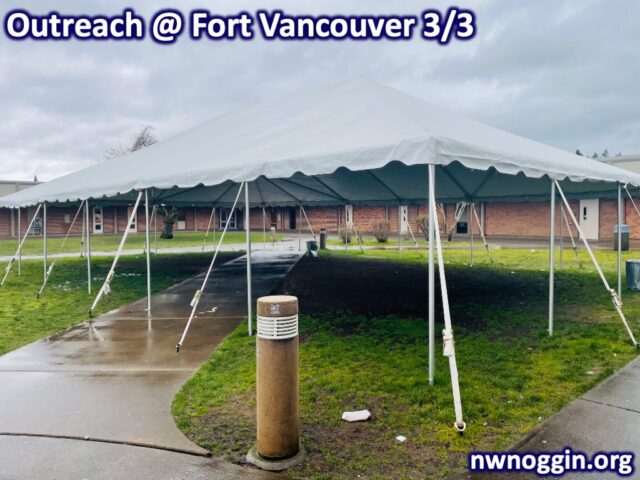
And of course a continued risk from coronavirus, including delta and omicron variants, has kept us out of the crammed Vancouver Public School classrooms that we LOVE. We’ll get back there eventually, but when science (not just politics) determines it’s safe.

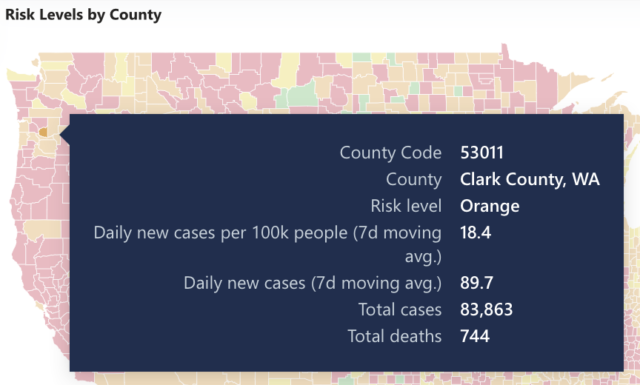
LEARN MORE: How severe is the pandemic where you live?
But there’s great value in changing expectations, in leaving classrooms and offering brains, art and volunteers in novel places, and despite some occasional showers, we had an outdoor blast with students at Fort Vancouver High School – the home of Trappers!
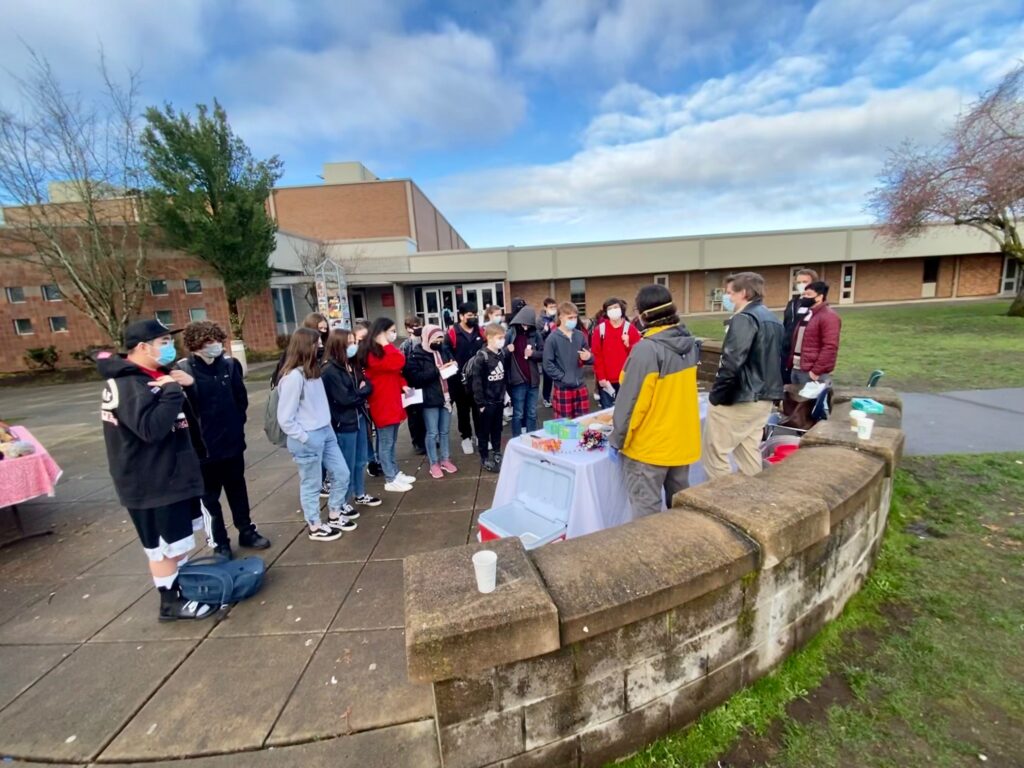
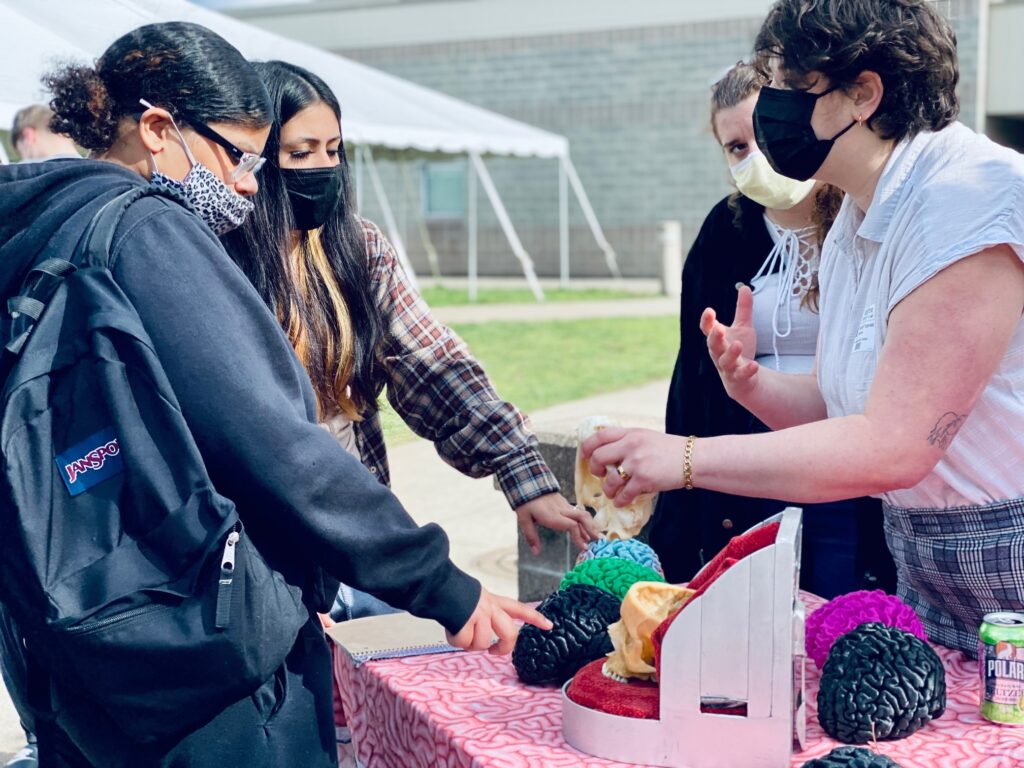
Home of the (Tired) Trappers!
We love visiting students at Fort, and have collaborated many times over the years with their amazing Biology teachers Coreyanne Russell and James Cederstrom.
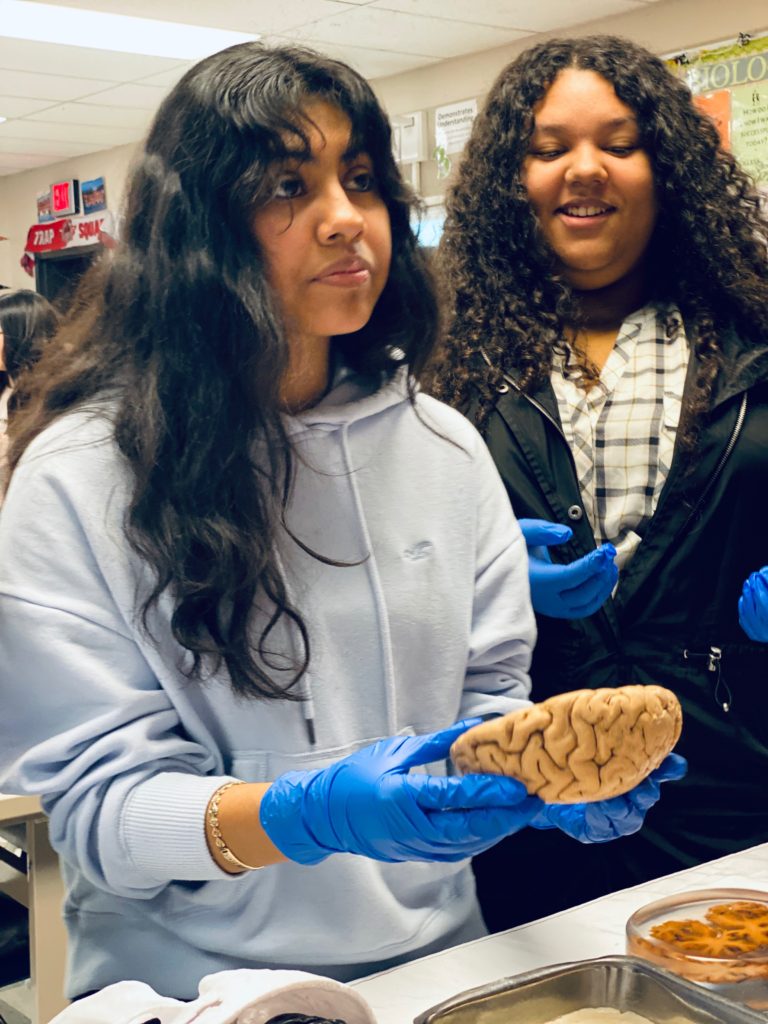
LEARN MORE: Uploading your brain from Vancouver
LEARN MORE: Why do you study the brain?
LEARN MORE: Trap Squad!
LEARN MORE: Brains, biofeedback & SLEEP @ Fort Vancouver!
LEARN MORE: Ventricles in Vancouver!
Our accomplished outreach participants began arriving about a half hour after sunrise.
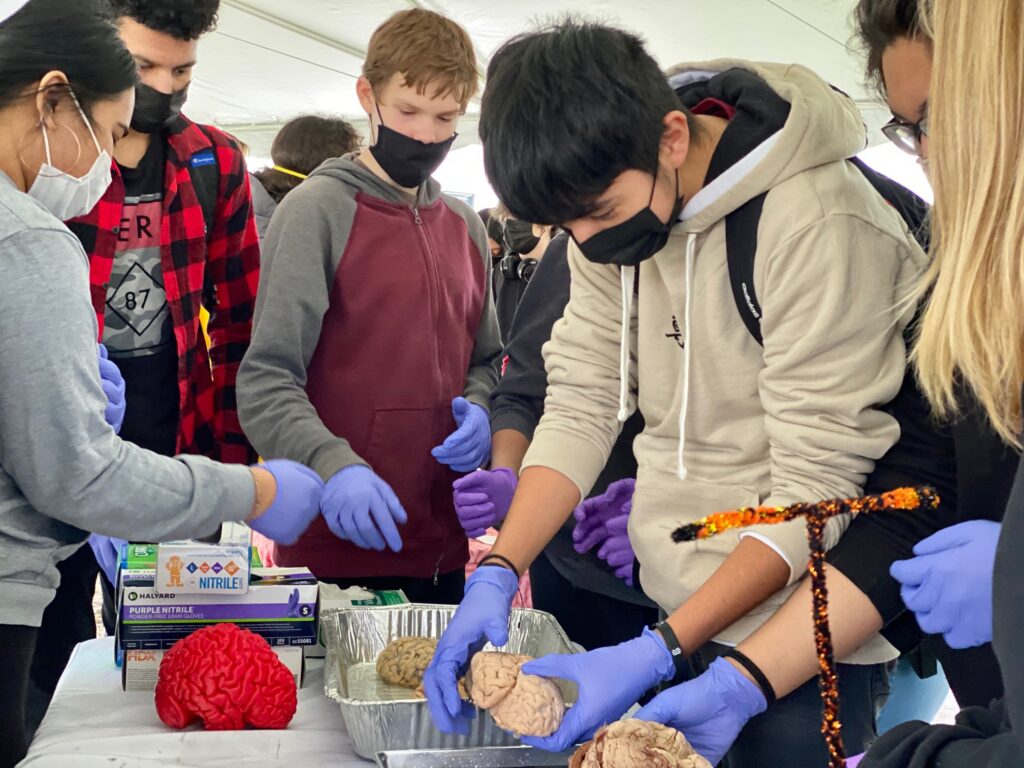
Kass Fitzgerald, Theresa Vu, Alex Phanphackdy, Alex Heinrich and Tira Gaston from Portland State University, Ben Bolen from PSU and the PSU Neuroscience Club, Darrin Lane from Oregon State University, and Denesa Lockwood from Oregon Health & Science University set up under the big tent at Fort to talk research and make more art.
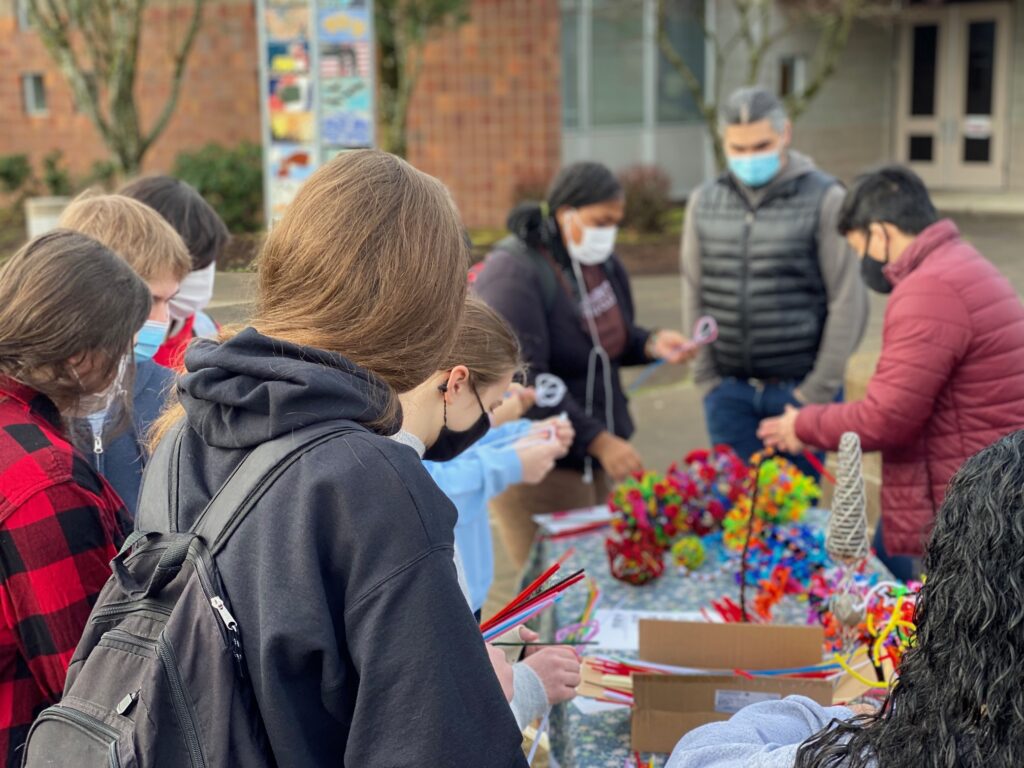
Fort Vancouver starts too early for healthy brains
“The first two hours of the school day are a waste – my brain is literally a blank.”
—10th grader at Fort Vancouver High School
Fort classes STILL (after all these years) begin ridiculously early, at 7:25am – much too early, according to neuroscientists, for the healthy development of adolescent and young adult brains. The research on this is exceedingly clear.
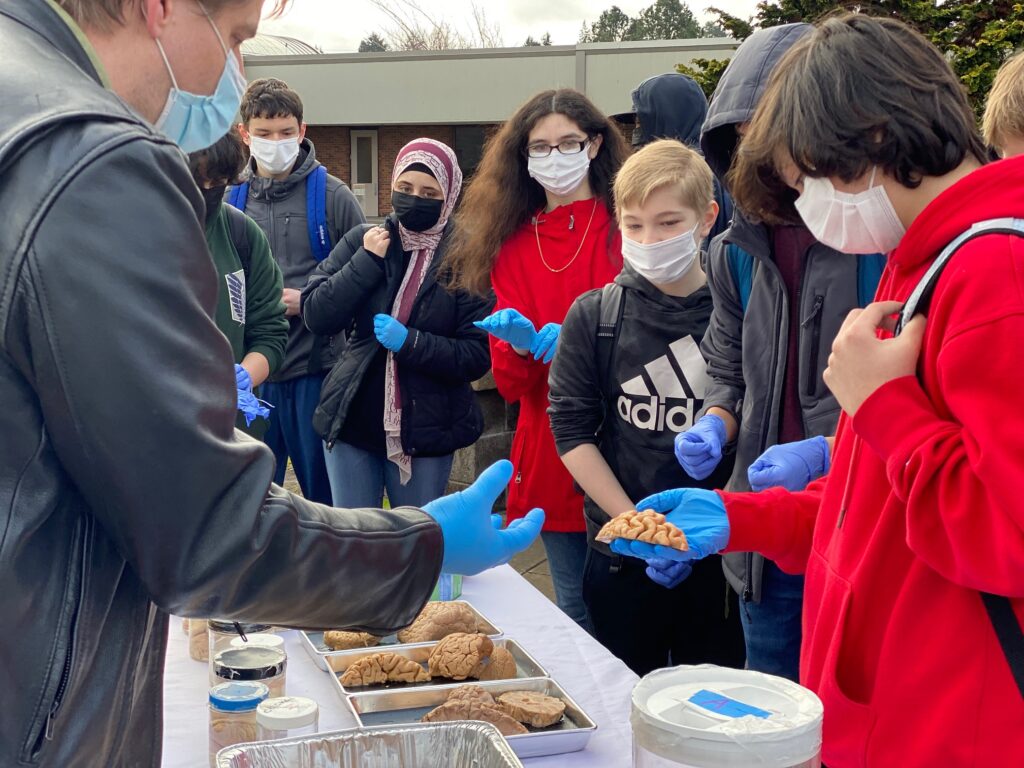
“Sleep–wake schedules set by school do not fit with biological circadian and homeostatic processes regulating adolescent sleep patterns. Consequently, several aspects of quality of life and education of teenage students are compromised. The American Academy of Pediatrics has recommended that middle and high schools should begin no earlier than 8:30 a.m. to adequately satisfy the sleep needs of students.”
—Later School Start Time: The Impact of Sleep on Academic Performance and Health in the Adolescent Population
Teachers and students reported four separate fights in school yesterday – events less likely to occur if school started later, and students enjoyed healthier amounts of sleep.
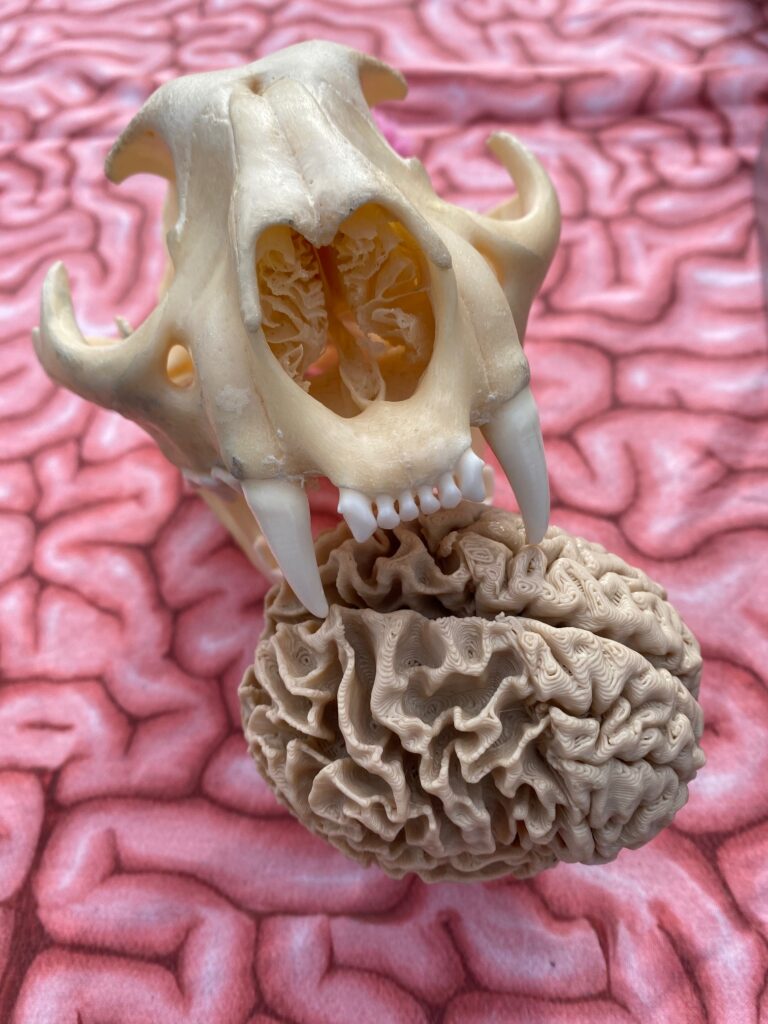
LEARN MORE: The influence of school time on sleep patterns of children and adolescents
LEARN MORE: Science Update: Later school start times may reduce sleep deficits for high school students
LEARN MORE: Exposure to violence, social cognitive processing, and sleep problems in urban adolescents
LEARN MORE: The Prospective Association between Sleep Deprivation and Depression among Adolescents
LEARN MORE: Sleep Deprivation in Adolescents and Adults: Changes in Affect
LEARN MORE: School Start Times for Adolescents
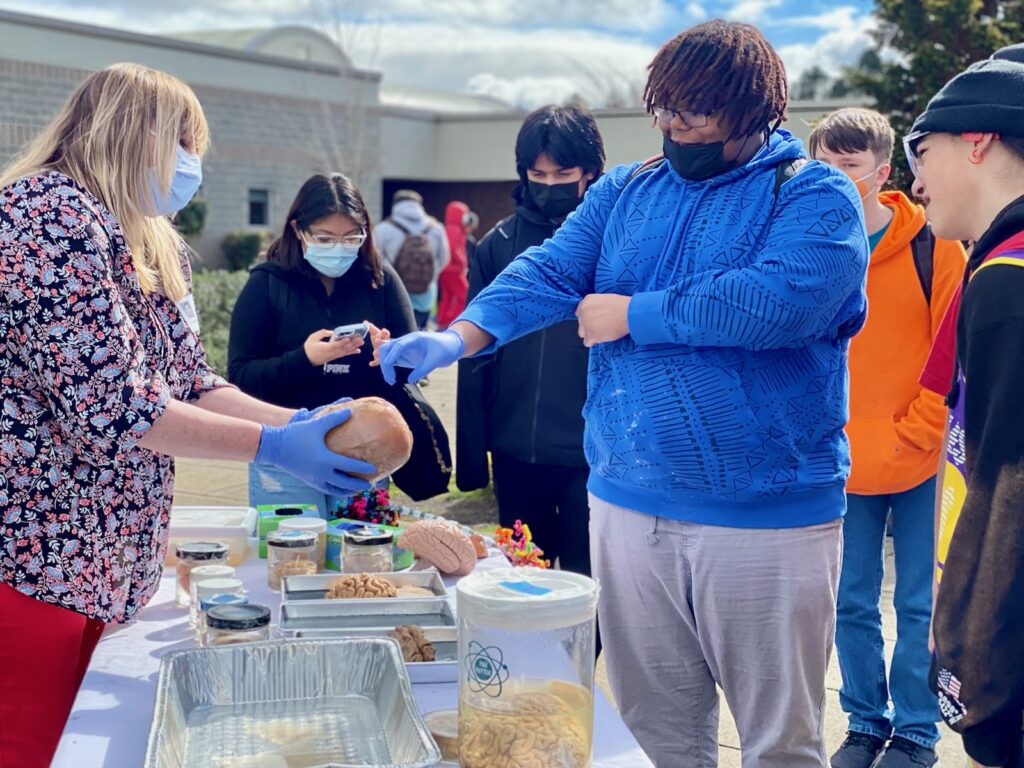
Daylight “Savings” makes it worse
The situation will only worsen next week, on Sunday, March 13, when the Pacific Northwest joins most of the country in shifting to “Daylight Savings Time,” which saves zero daylight, but does force us all to wake up an hour earlier in the dark.
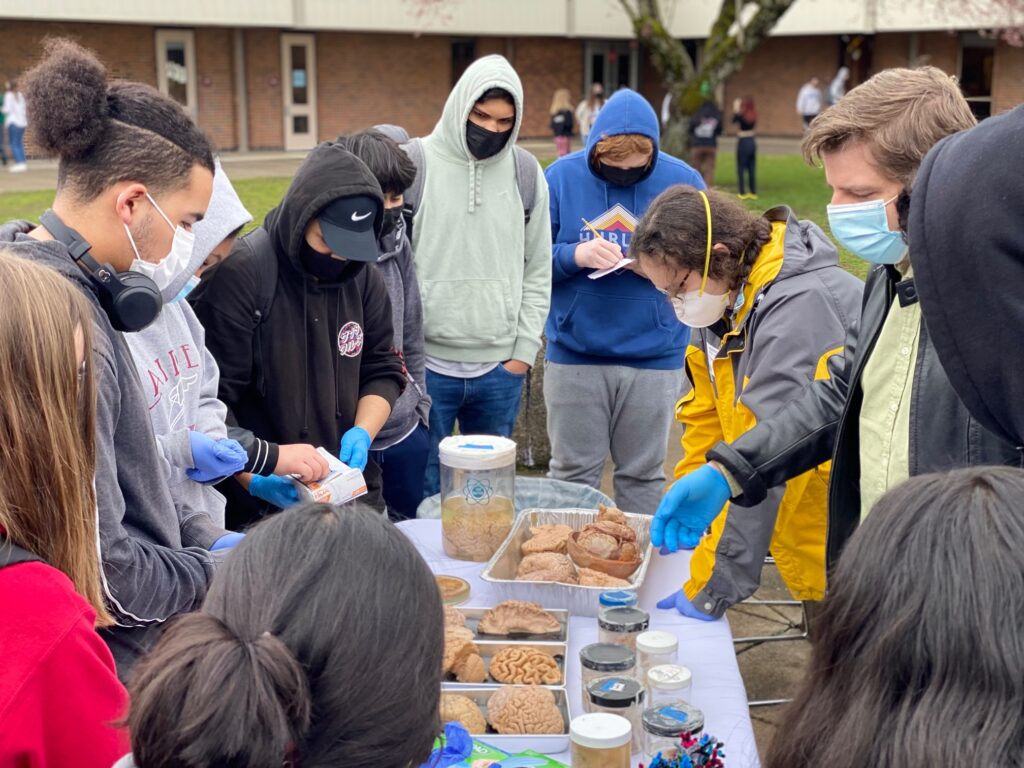
The switch to Daylight Savings, supported by golf and other business lobbyists, kills people, drives up rates of mental illness, worsens school attendance, and increases the prevalence of heart disease and stroke. If we follow the science, permanent standard time is the way to go.
LEARN MORE: The US wants to increase sleep deprivation and winter misery
LEARN MORE: Daylight Saving Time Transitions: Impact on Total Mortality
LEARN MORE: Increased Patient Safety-Related Incidents Following the Transition into Daylight Savings Time
LEARN MORE: Daylight saving time, circadian rhythms, and cardiovascular health
LEARN MORE: Why should we abolish Daylight Saving Time?
LEARN MORE: Daylight Saving Time and Artificial Time Zones – A Battle Between Biological and Social Times

ACT: SAVE STANDARD TIME
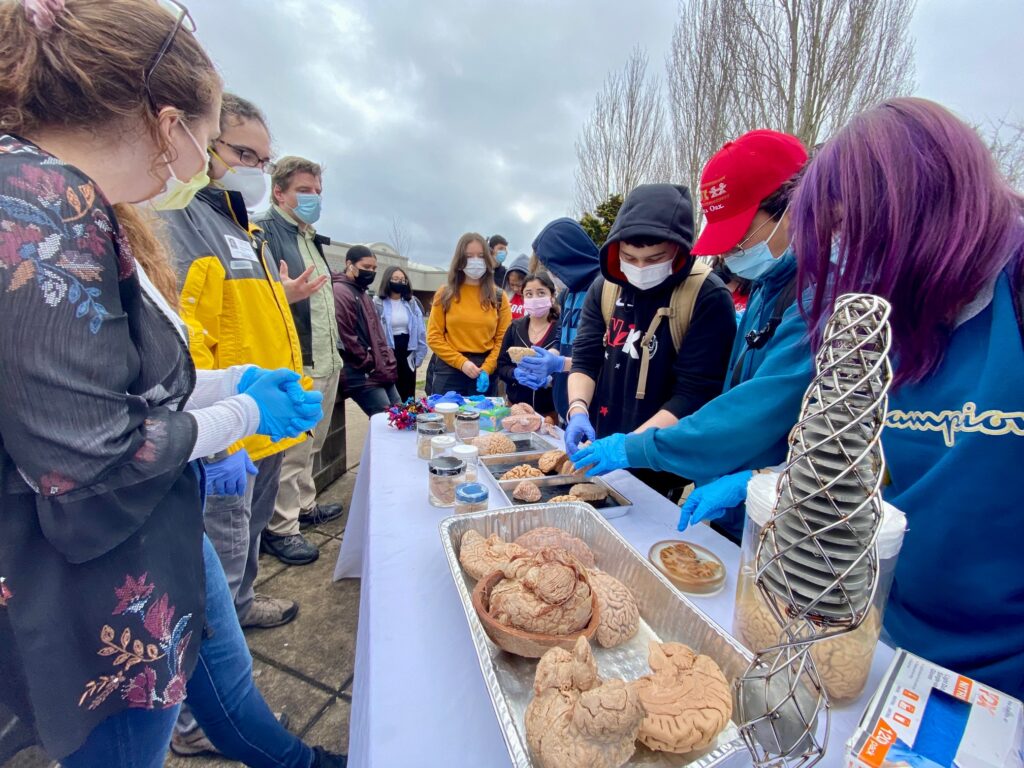
Thankfully, Coreyanne and James provided an adenosine receptor antagonist (that would be the caffeine in their welcome hot coffee) and snacks to fuel our morning volunteers!
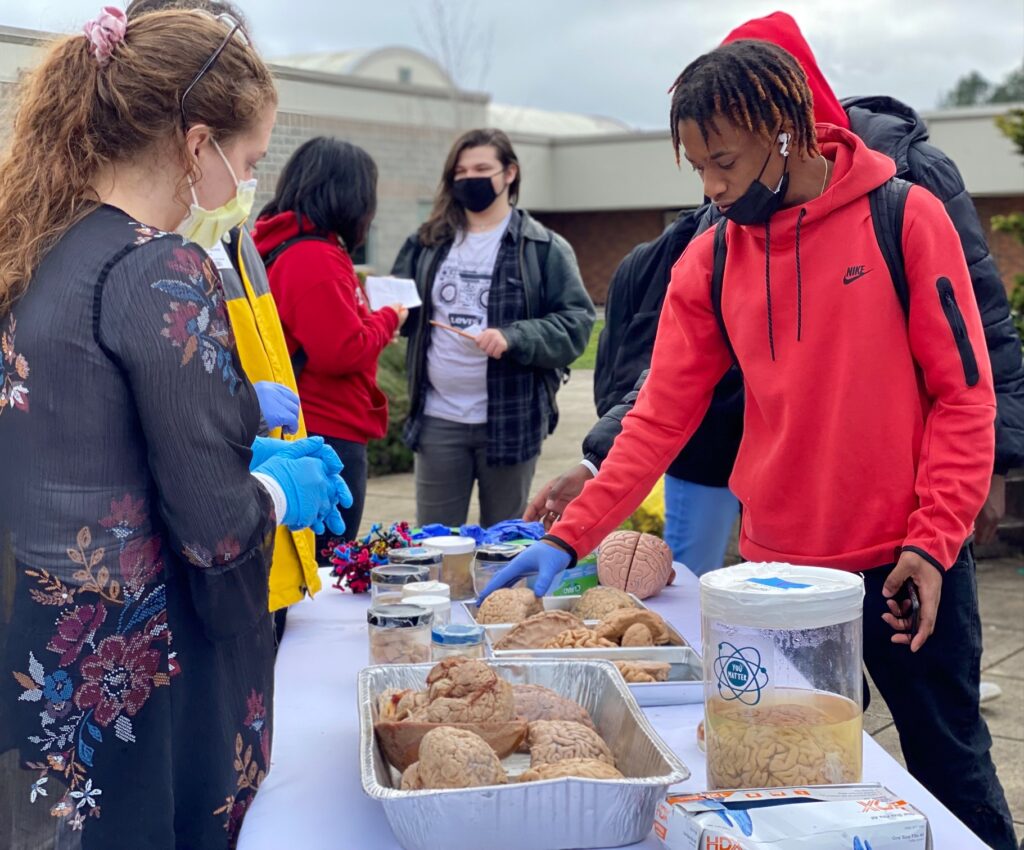
LEARN MORE: The Safety of Ingested Caffeine: A Comprehensive Review
LEARN MORE: The Impact of Caffeine and Coffee on Human Health
LEARN MORE: Tipsy Buzzed Mice @ Street 14
And despite the early (too early!) start, Fort students asked utterly AMAZING questions, shared terrific stories, crafted beautiful brain cells and offered tremendous hope for all they contribute to and discover themselves!
Brain Wrangling
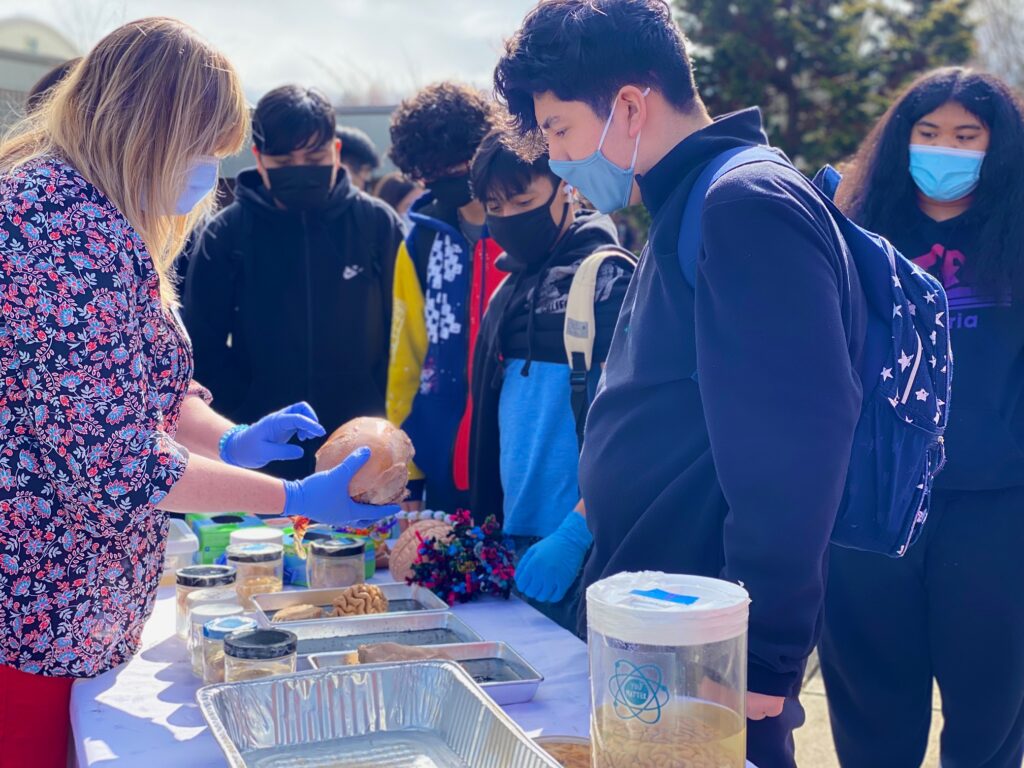
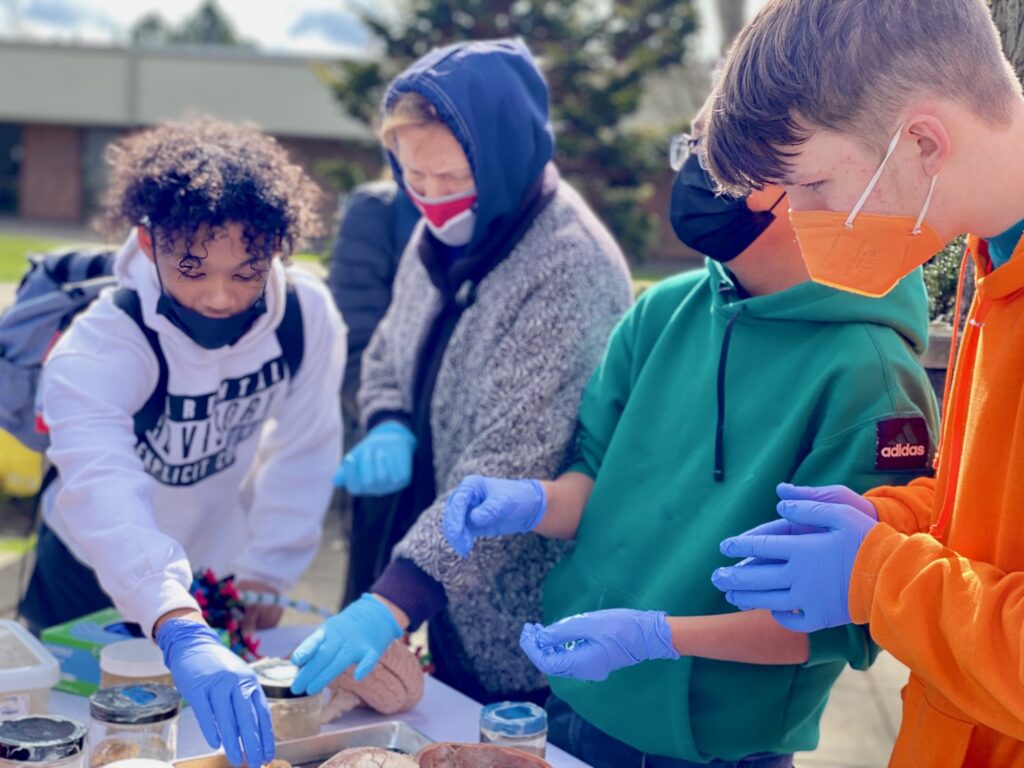
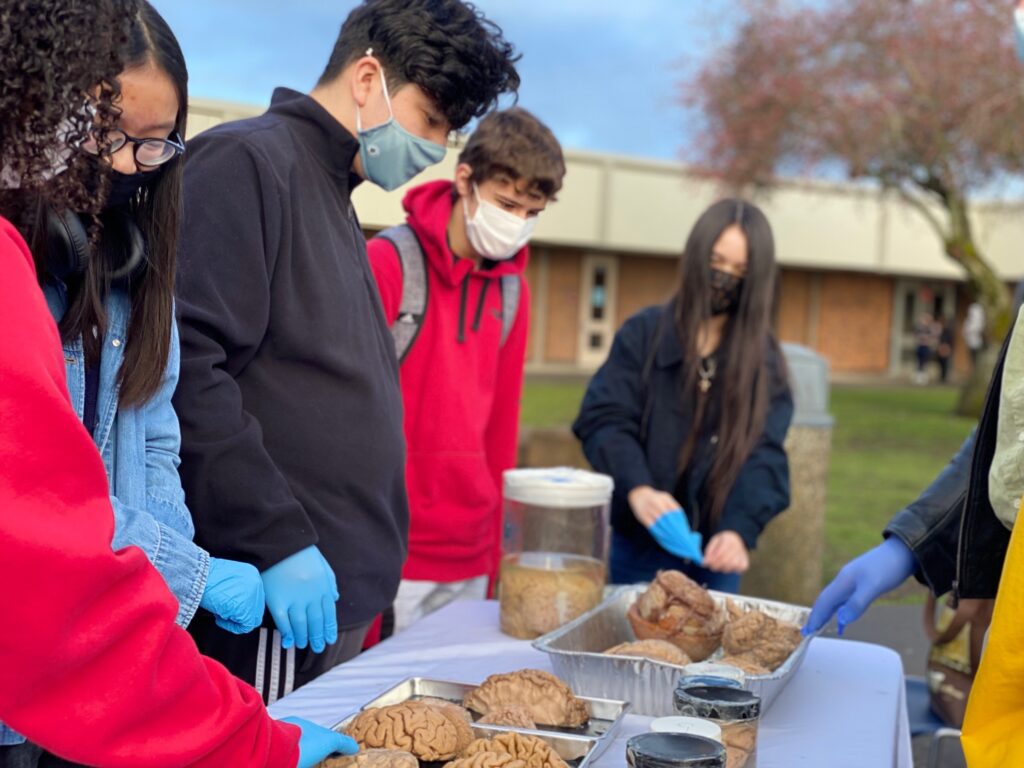
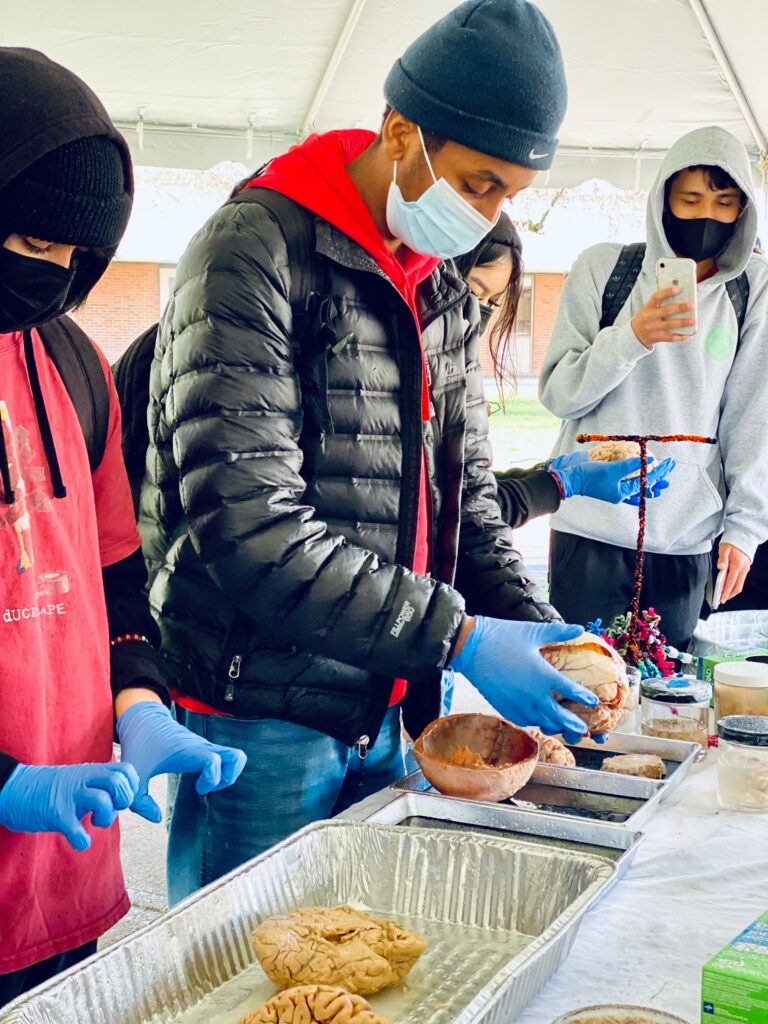
Pipe cleaner Neurons!
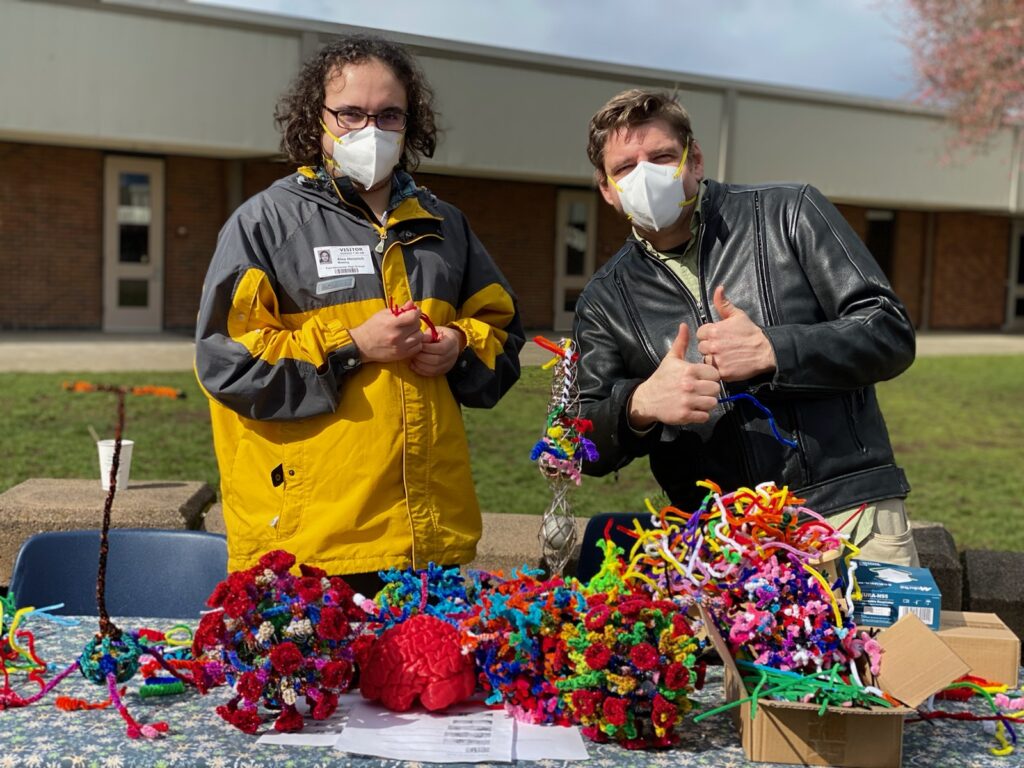
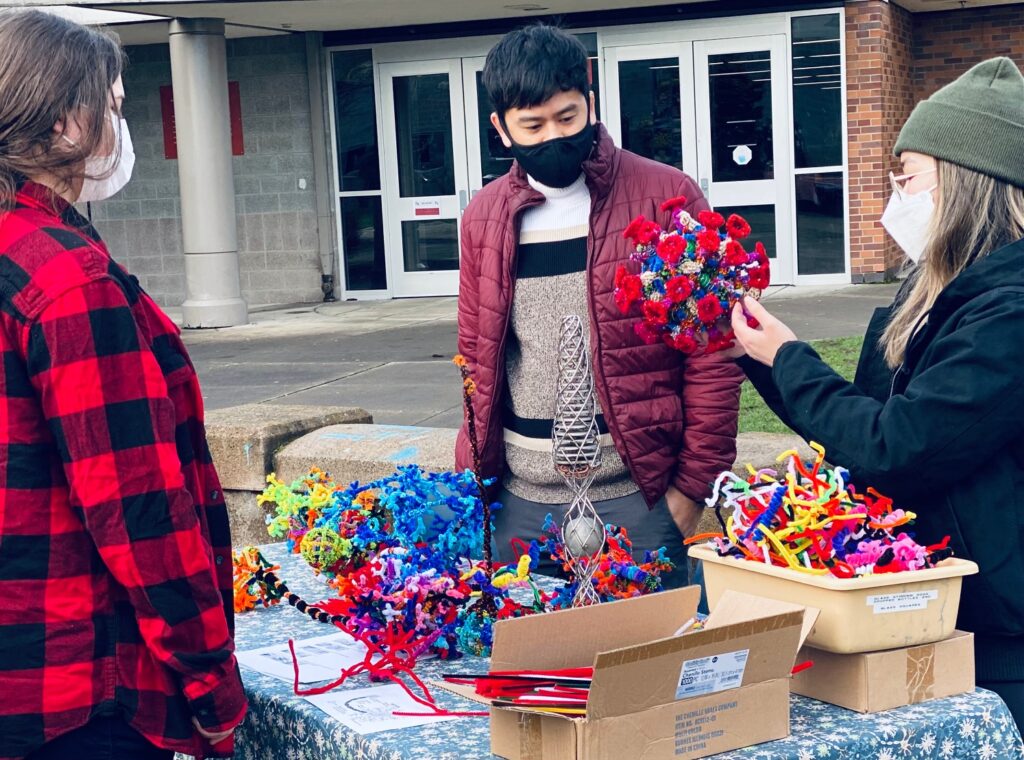
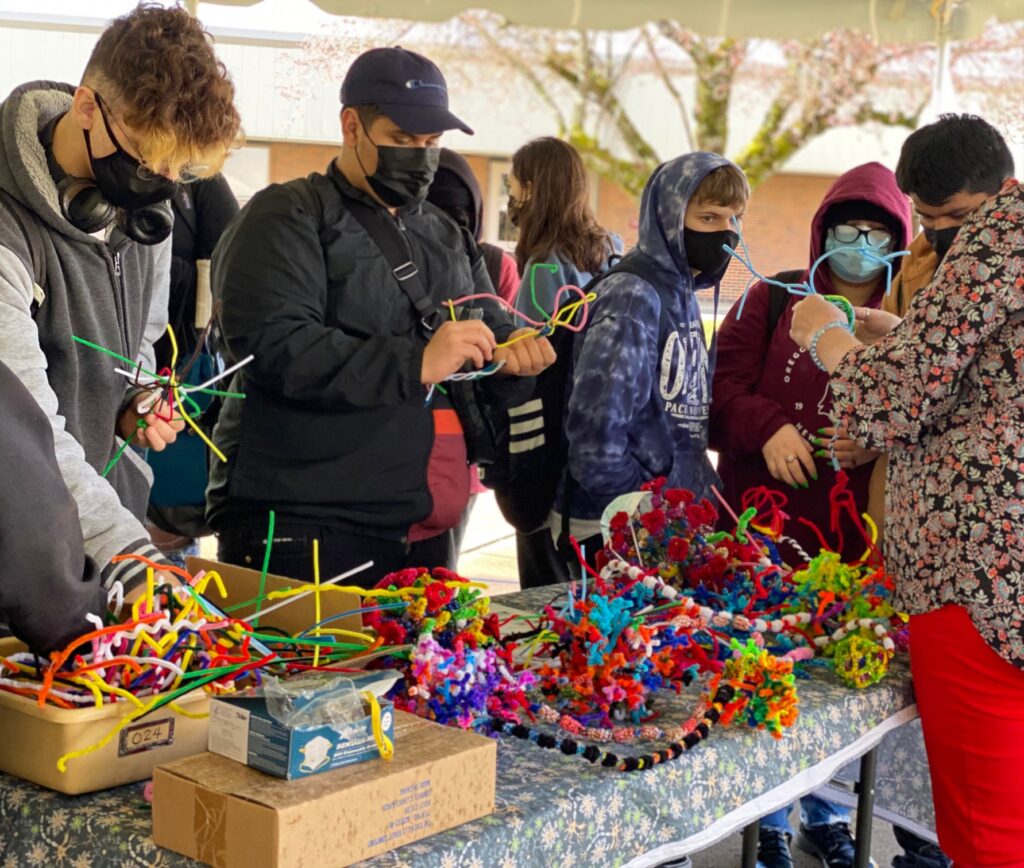
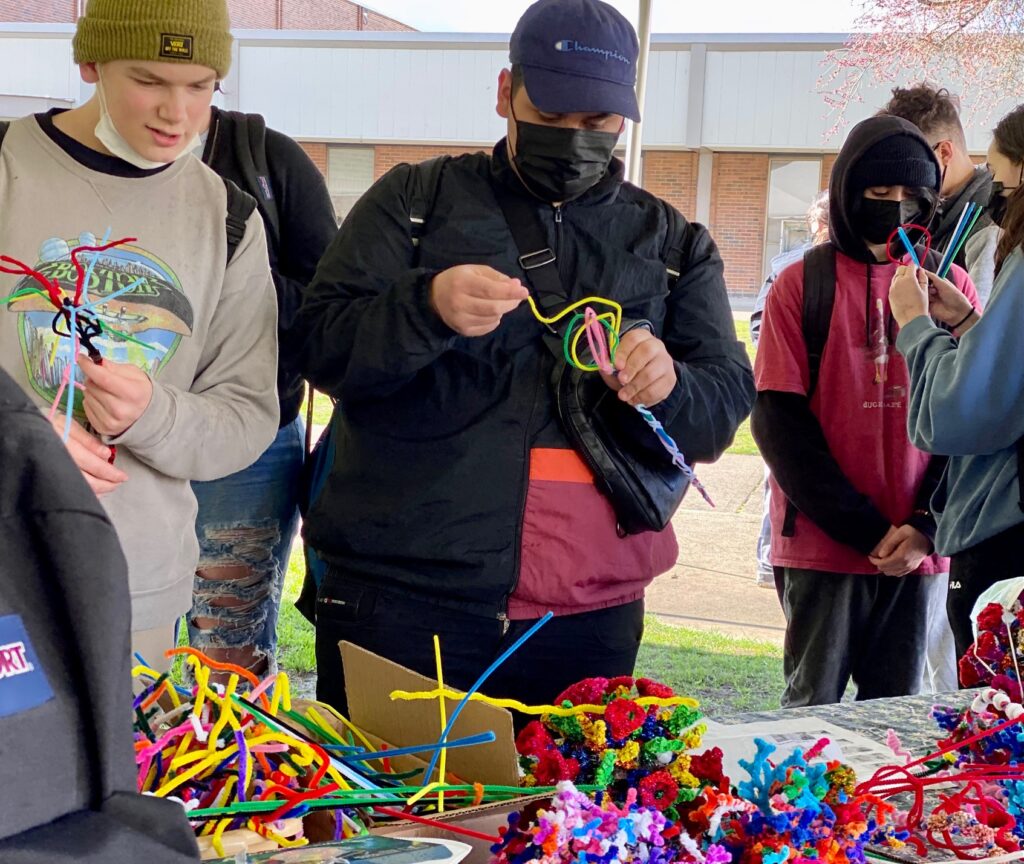
MAKE YOUR OWN: Pipe Cleaner Neurons & More!
Questions
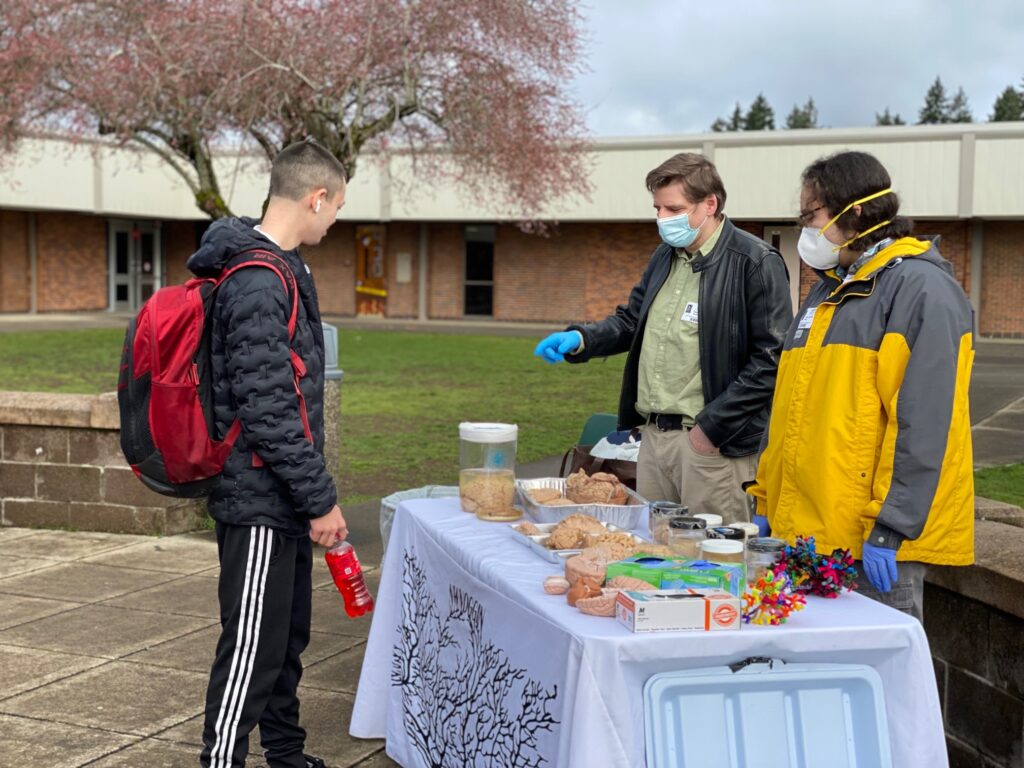
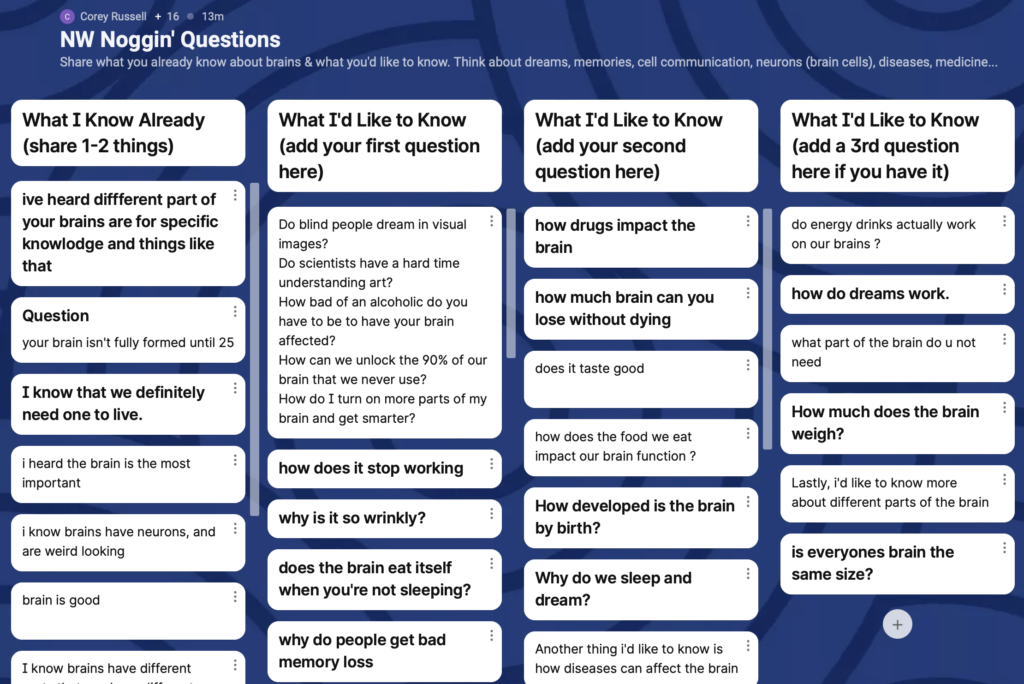
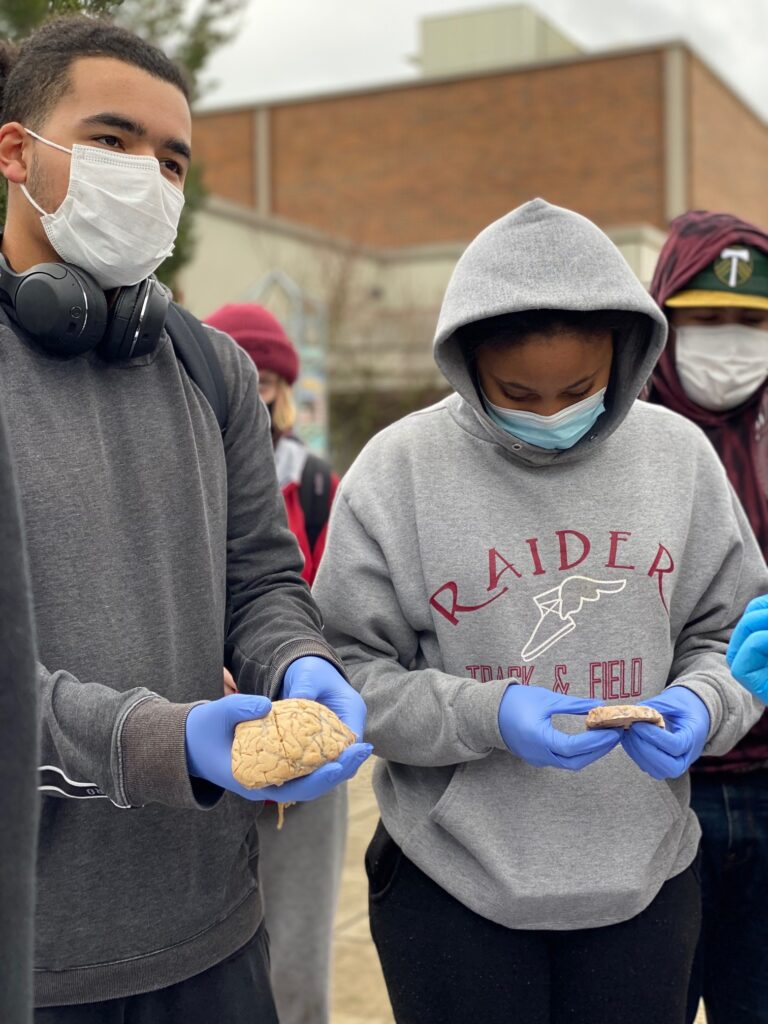
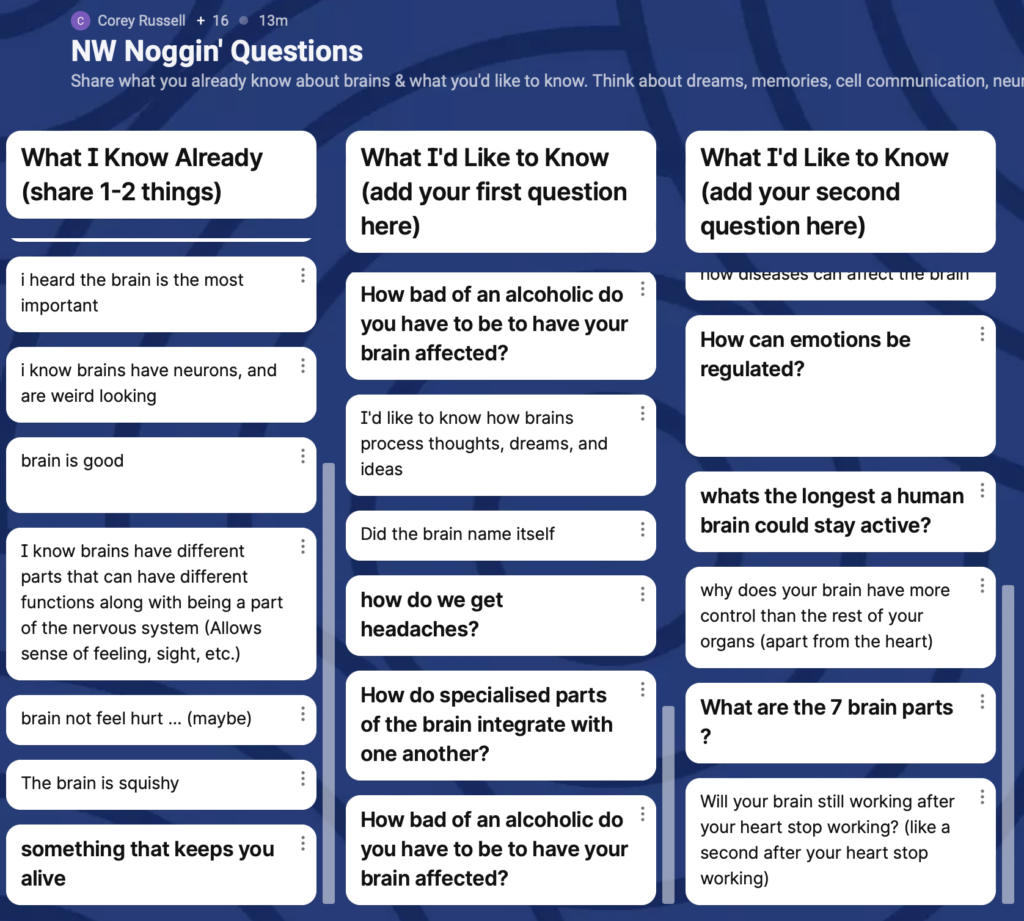
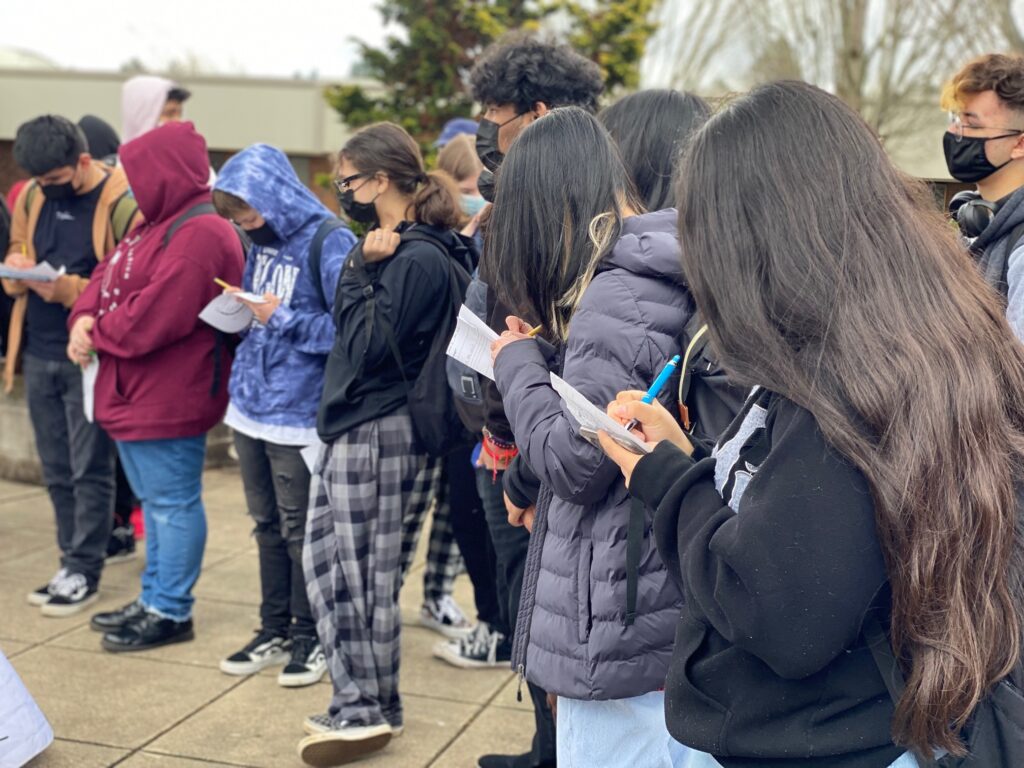
LEARN MORE: Interdisciplinary Neuroscience Minor @ Portland State University
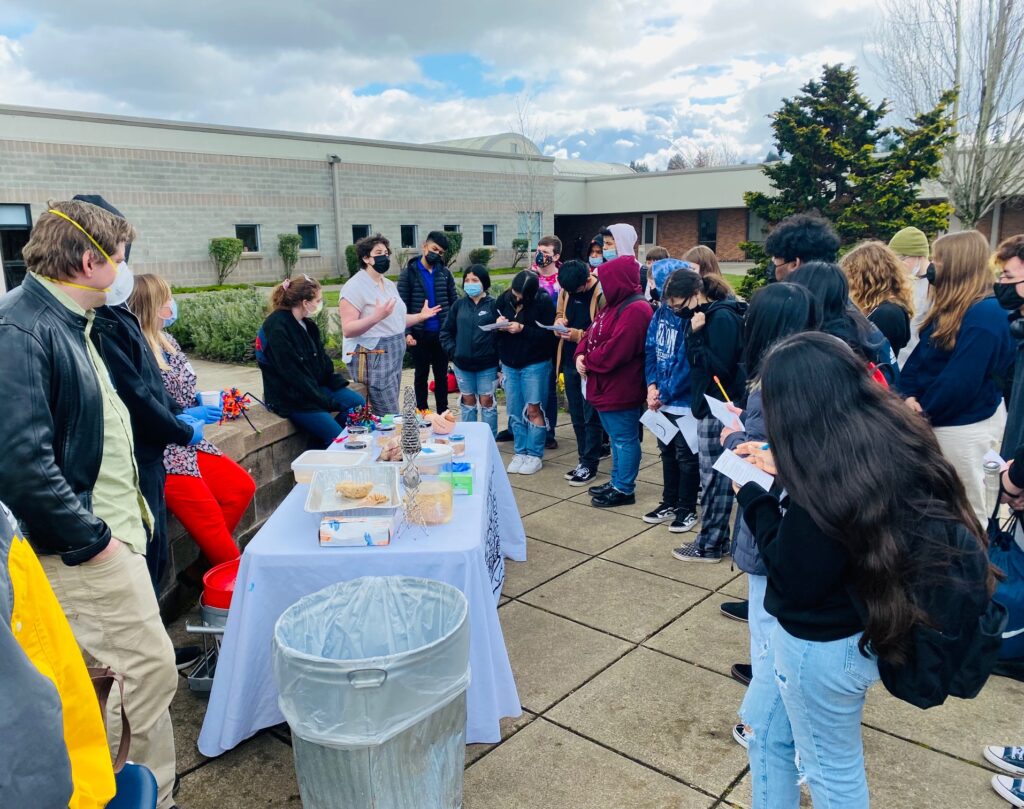
LEARN MORE: Epilepsy
LEARN MORE: The Epilepsies and Seizures: Hope Through Research
LEARN MORE: Substance Use and Co-Occurring Mental Disorders
LEARN MORE: Chronic Traumatic Encephalopathy: A Brief Overview
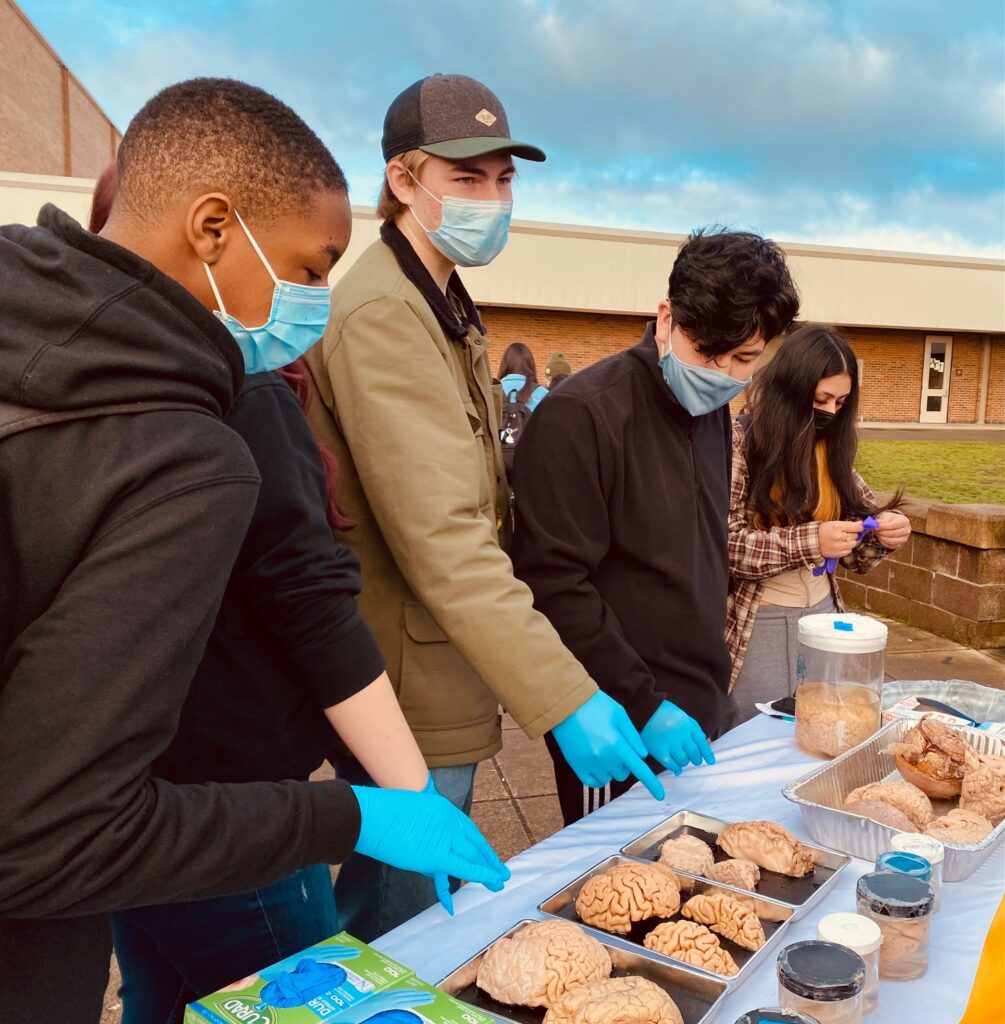
So many thanks to our intrepid, early morning outreach volunteers, and to the curious, thoughtful, sleep-deprived students, teachers and staff at Fort Vancouver High School!
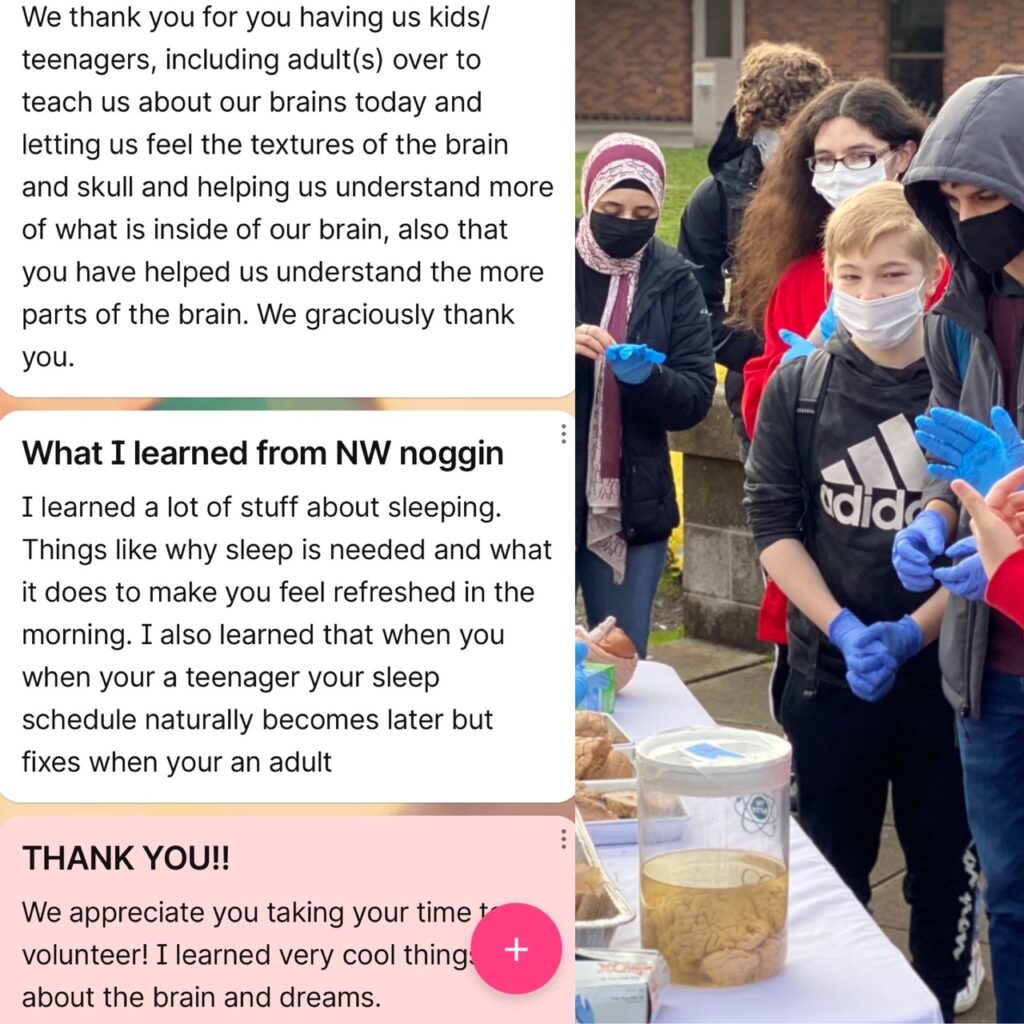
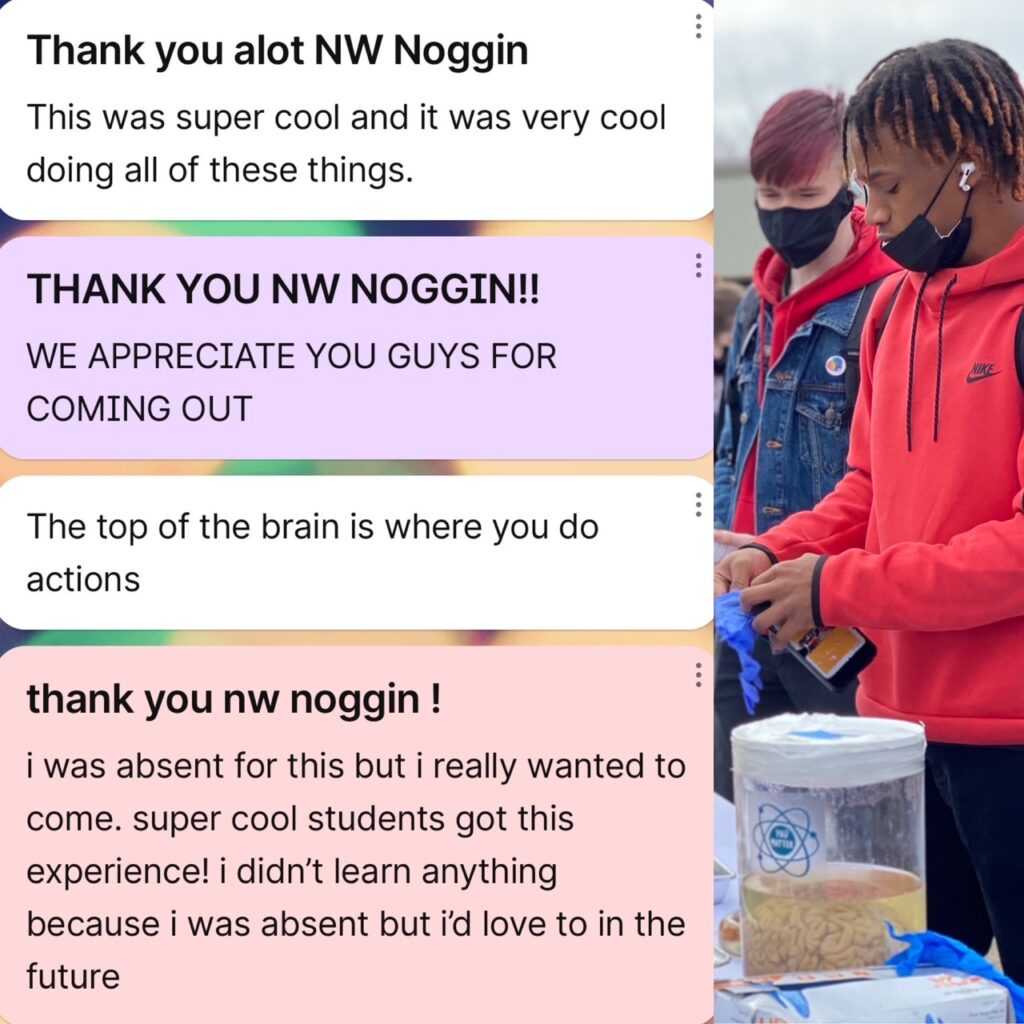
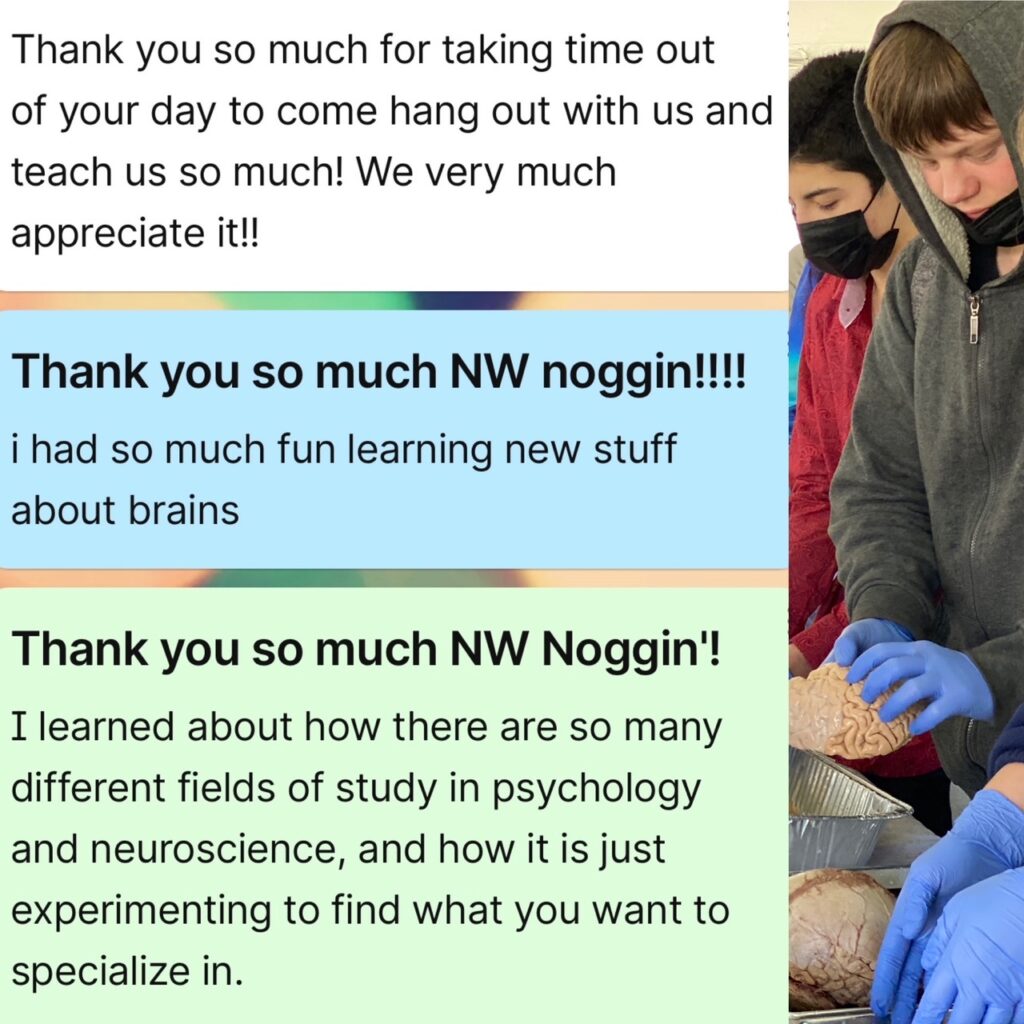
***READ MORE STUDENT RESPONSES FROM FORT!
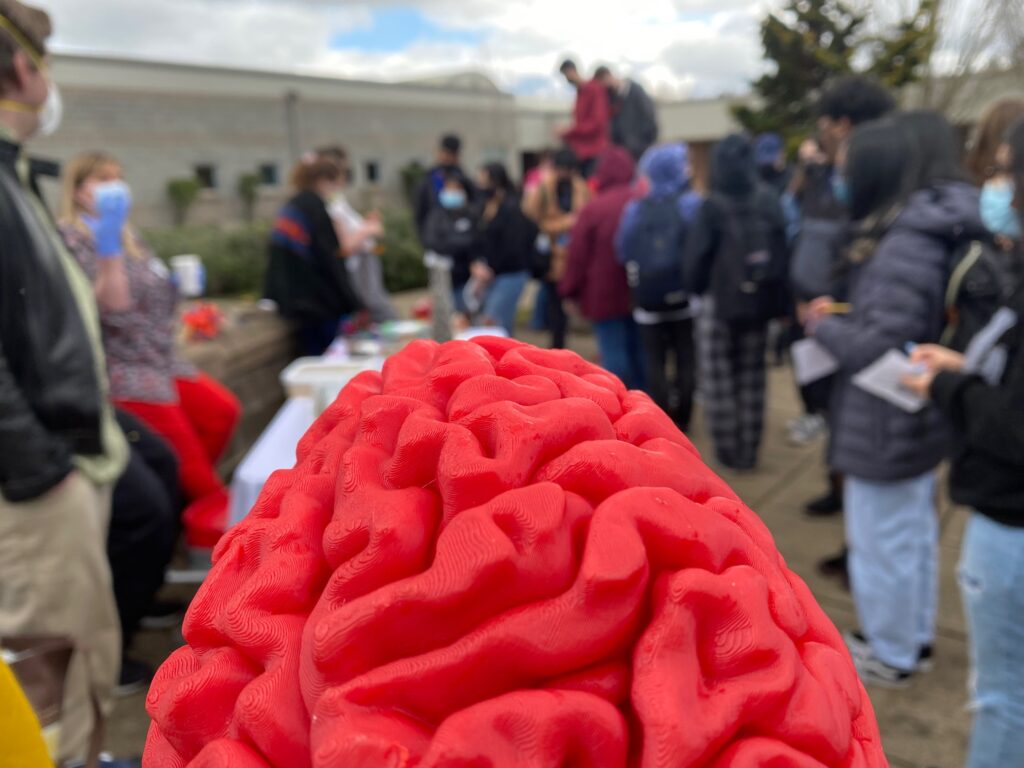
NEXT FOR NOGGIN: WE’RE HEADING TO LONDON!!!!!!
Noggin in LONDON @ Kings!
